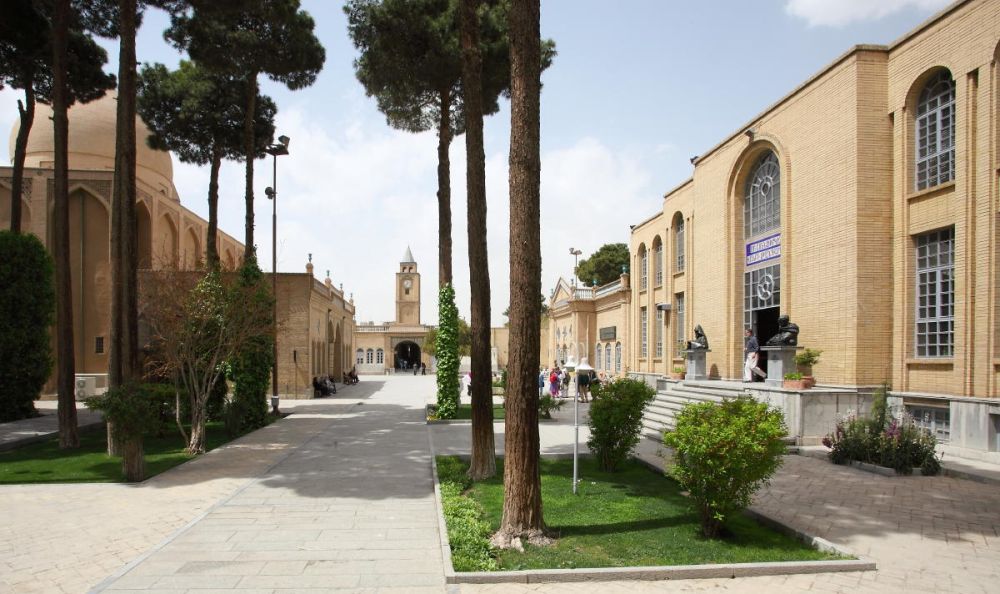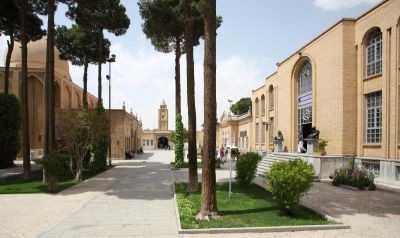

Vank Cathedral, also known as the Holy Savior Cathedral, is one of the most visited attractions in Jolfa, Isfahan. The cathedral showcases a unique blend of Islamic and Christian architecture, making it an exemplary symbol of cultural harmony. Constructed in the 17th century during the Safavid era, Vank Cathedral's interior is adorned with intricate frescoes and gilded carvings illustrating Biblical stories. The main dome is impressive with its detailed paintings, while the museum on site provides historical insights into the lives of the Armenian community in Isfahan. Visitors often find the combination of architectural styles and the rich history behind this cathedral to be an enlightening experience. Walking through its serene courtyards and admiring the fascinating artwork inside the church provides a glimpse into the historical depth of this region. Don't miss the opportunity to view the ancient manuscripts and printed books in the library, which are of significant historical value.
Strolling through the Jolfa neighborhood is a journey through the heart of Isfahan's Armenian quarter. Its narrow alleys and vibrant atmosphere make it an ideal place to experience the unique blend of cultures that this city offers. Jolfa is lined with charming coffee houses, traditional eateries, and boutique shops that reflect the heritage of the Armenian community. Here, you can savor Armenian-style coffee, sample local pastries, or buy handcrafted souvenirs. The district's relaxed vibe contrasts with the bustling bazaars elsewhere in the city, offering a more laid-back experience. Visitors can admire the well-preserved architecture, including colorful tile work and classic wooden balconies. Exploring Jolfa is not just about witnessing the distinct architecture; it's also about feeling the vibrant pulse of a community that has thrived here for centuries. The neighborhood is active throughout the day but is particularly enchanting in the evenings when the area comes to life with locals and tourists alike.
Coffee culture is strong in the Jolfa quarter of Isfahan, where Armenian cafes brew some of the best coffees in the city. These charming establishments immerse visitors in a cozy atmosphere where the aroma of freshly ground coffee beans pervades the air. Some cafes also serve as cultural hubs, hosting small art galleries and live music performances. Coffee tasting in Jolfa is a delightful activity for aficionados and novices alike, with baristas often willing to share their knowledge about different brewing methods and the origins of their beans. Along with your coffee, you can enjoy a variety of pastries and sweets that are staples in Armenian gastronomy. These cafes are not only about the drinks but also about the experience of slowing down and appreciating the rich cultural tapestry of this historic neighborhood.
Jolfa, with its beautiful architecture and vibrant street scenes, is a dream for photography enthusiasts. From the elaborate facades of churches to the traditional houses with their richly decorated entrances and balconies, there's no shortage of captivating subjects. A guided photography tour through the Armenian Quarter will open your eyes to both the grand and the minute details that make this area so photogenic. Local guides with photography experience can help you capture the perfect shots while explaining the historical and cultural significance of the various landmarks. Exploring Jolfa through the lens of a camera allows for a deeper appreciation of the artistry and craftsmanship evident in every corner of this picturesque neighborhood. Whether you are a professional photographer or a hobbyist, Jolfa offers a visual feast that is sure to inspire.
Shopping in Jolfa is a colorful experience, highlighting the skilled craftsmanship of the Armenian community in Isfahan. The quarter's quaint shops and boutiques offer a diverse range of traditional handicrafts, textiles, and jewelry. These unique items often reflect the deep-rooted cultural heritage of the artisans who create them, making them perfect souvenirs or gifts. When you visit Jolfa's handicraft stores, you're not just buying a product; you're taking a piece of Armenian-Iranian culture home with you. From hand-painted ceramics and intricate metalwork to handwoven carpets and delicate textiles, each craft tells its own story. Shoppers have the opportunity to interact with the artisans themselves, gaining insight into the methods and traditions behind their work. This activity adds a personal connection to your shopping experience and supports the local community's economy.
The historic bridges of Isfahan, including the Si-o-se-pol and Khaju Bridge, are not-to-be-missed landmarks that offer a historical journey through the city's rich past. A walking tour along the Zayandeh River, which flows through Jolfa and other parts of Isfahan, provides beautiful views of these architectural marvels. Both bridges are exemplary of Safavid-era engineering and aesthetics, serving as social hubs for locals and focal points for tourists. Si-o-se-pol, or the Bridge of 33 Arches, is known for its length and the double-decker structure, while Khaju Bridge captivates with its ornate decorations and built-in gallery. Along the walking tour, guides often indulge participants with stories about the bridges' construction, their role in the city's development, and the cultural events that have taken place on these historic thoroughfares. A sunset stroll across these bridges is particularly magical when the lighting accentuates their grandiosity and the water reflects the softening sky.
The Flower Garden of Isfahan, also known as Bagh-e Golha, is a tranquil oasis located near the Jolfa neighborhood. It is a perfect destination for those looking to enjoy nature and escape the city's hustle and bustle. The garden features a wide array of flowers, plants, and trees from around the world, set amidst fountains, ponds, and beautifully landscaped areas. Walking paths meander through the park, allowing visitors to admire the various themed sections, such as the rose garden and the greenhouses that showcase exotic plant species. Spending time in Bagh-e Golha is a rejuvenating experience, as you can relax on benches, enjoy the scents and colors of the flowers, or have a picnic on the lush grassy areas. It's an ideal spot for families, nature lovers, and those looking for a peaceful retreat within the city, accompanied by the soothing sounds of nature and water features.
A visit to Jolfa is incomplete without tasting the delectable Armenian pastries that are a staple in the neighborhood's bakeries. These sweet and savory treats are deeply rooted in the Armenian culinary tradition and offer a delightful sampling of the community's flavors. From the buttery layers of Gata to the sweet filling of Pakhlava, the pastries are often made using age-old family recipes passed down through generations. These confections are not only a feast for the palate but also showcase the blend of cultural influences that have been refined over time. As you wander through Jolfa, the inviting scent of freshly baked goods will guide you to local bakeries where you can indulge in a variety of pastries, often served with a side of warm and hospitable service characteristic of the Armenian community. Sampling these pastries allows for an authentic, delicious experience that connects you directly to the heart of Jolfa's heritage.
The Music Museum of Isfahan, located in the Jolfa district, is not just a museum but also a cultural center where visitors can engage with the rich musical heritage of Iran. The museum offers an array of musical instruments enticing music lovers and curious travelers alike. By attending one of the many cultural events, concerts, or workshops that the museum organizes, guests can immerse themselves in traditional Persian music. These events are led by talented local musicians who also provide background on the instruments and the history of the music they perform. The interactive sessions sometimes allow attendees to try their hand at playing some of the instruments, offering a hands-on cultural experience that is both educational and entertaining. The Music Museum showcases how music is an essential part of Isfahan's cultural identity and provides a window into the collective soul of its people.
Pottery-making is an integral part of Iranian art and culture, and in Jolfa, visitors have the opportunity to engage with this ancient craft through hands-on workshops. These sessions offer a deeper understanding and appreciation of pottery as both an artistic expression and a functional craft. Led by experienced locals, workshop participants learn about the techniques and processes involved in creating pottery, from molding the clay to firing the finished pieces. Engaging in a pottery workshop is not just about learning new skills; it's about connecting with a tradition that has been a cornerstone of Iranian culture for thousands of years. Guests take pride in making their pottery, which also serves as a unique and personal souvenir. Whether you're an aspiring artist or simply looking for a unique cultural experience, a pottery-making workshop in Jolfa is sure to leave you with a lasting memory of your visit to Isfahan.
